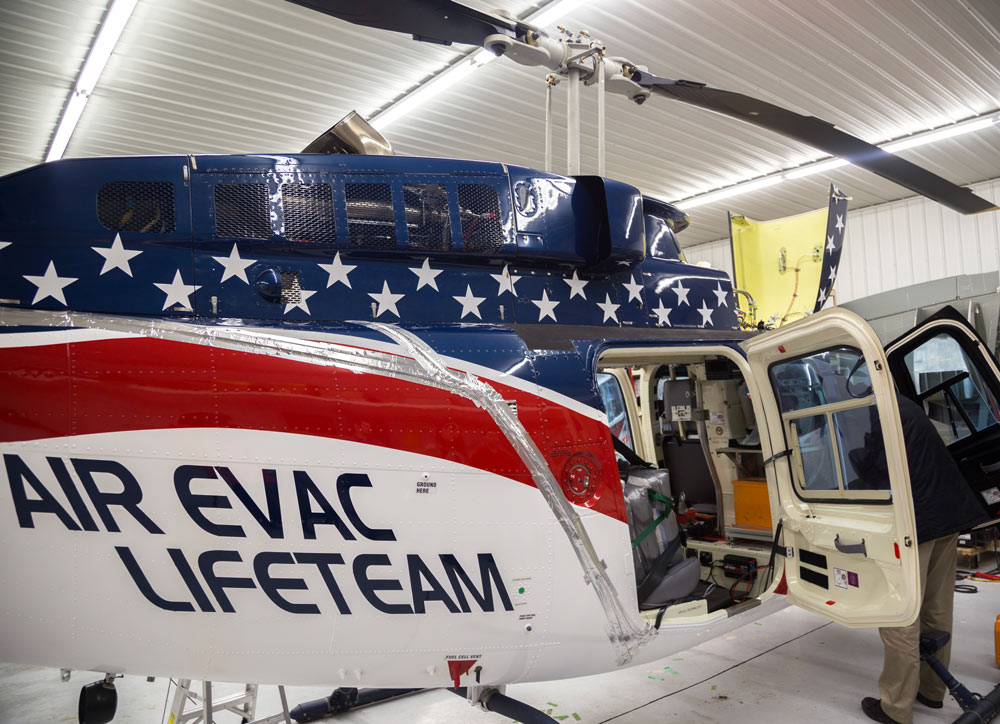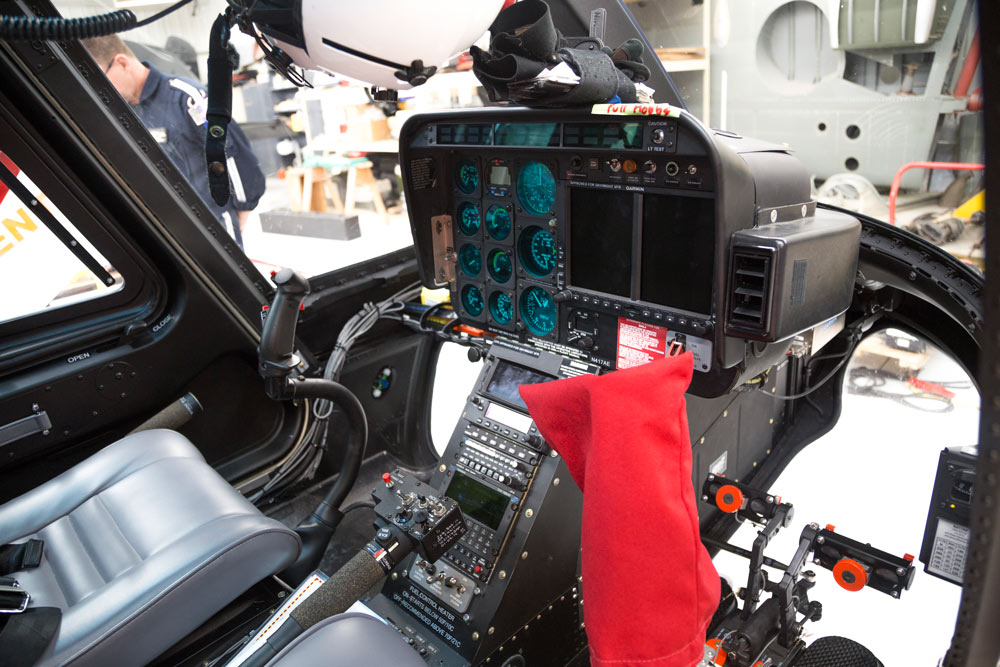“The Frasca HTDs will provide Air Evac with continuity of training to ensure that everything we teach at headquarters and in the field is consistent,” says Sullivan.
Two of the HTDs have can be re-configured in less than an hour to train pilots flying the Bell 407. The kit includes Bell 407 cockpit panels and software that replicates the performance of the four-blade helicopter.
Six HTDs installed in 18-foot long dual-axel trailers to be strategically located in Air Evac air ambulance bases in Ada, Okla., Danville, Ky., Manchester, Tenn., Forrest City, Ark., Cordele, Ga., and Killeen, Texas.
One fixed-base 206L4/407 AATD will be installed at Air Evac’s O’Fallon training center adjacent to the Level 7 FTD and Killeen’s simulator may be reconfigured to train Bell 407 pilots.












